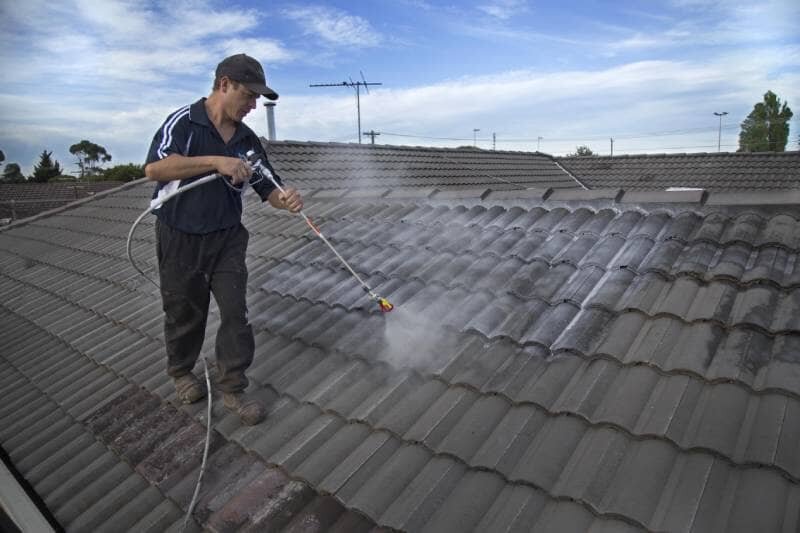Roof Restoration Process
Roof Restoration Process
Roof restoration is a term used to describe the complete process of transforming a tired, worn and damaged roof back to pristine condition. Roof restoration is more than just repairing a section of a roof or painting over roof tiles or metal, it involves the process of a full roof assessment and treatment of any underlying issues by a team of qualified roofing experts, to extend the life of a roof and bring it back to like-new condition.
A roof restoration can protect your home both now and in the long run.
Your roof gets hit with all the elements, from sun, rain, hail and wind. Much like car maintenance, if you don’t wash or service your car it will look dirty and over time will break down. A roof is similar. If you don’t maintain it, it won’t last as long.
While the roof restoratoin solution will vary depending on the condition of your roof, the material your roof is made of and the type of repairs needed, a roof restoration generally includes the following steps:
1. Roof inspection and assessment
The condition of your roof is inspected by a professional roofing applicator. This includes the assessment of any damage, the number of repairs needed and the type of treatment required. Often you’ll receive a detailed roof condition report outlining a customised roof restoration solution and a breakdown of each of the steps needed to address your roof’s specific concerns.
2. Roof repair
Next, your chosen roofing applicator will repair roof damages. Broken or missing tiles can be replaced on tiled roofs, and rusty or damaged metal sheets and loose roof screws can be replaced on metal roofs.
Ridge capping, the cement mortar that joins two intersecting materials on your roof, should always be inspected for cracks and repaired and rebedded, while any cracked or damaged pointing should be reapplied with a flexible product, such as Dulux Acratex Roof Pointing. Faulty or damaged valley irons should be removed and replaced with new ones.
3. Pressure wash
Your roof should then be ready for a clean and can be expertly pressure washed with a high-power tool to remove dirt, dust and any loose paint or other materials attached to your roof’s surface.
All roofs should be pressure washed with minimum 3000 PSI to make certain they’re being properly cleaned and all dirt, debris and excess surface build-up is removed.
4. Preparation and treatment
The roof’s surface is now able to be prepared and treated. The option of an algae and lichen treatment can be applied to effectively sterilise lichen, moss and mould spores and ensure they don’t resurface and damage the roof membrane in future.
If a lichen or moss spore stays inside the tile, they can incubate and regrow, affecting your new roof membrane, a mould and algae treatment will effectively neutralise the spore and stop regrowth from occurring."
5. Roof prime and seal
Your roof is now ready to be primed and sealed. A primer designed to treat your roof’s specific concerns can be applied. Older roofs or tiles that have become pitted due to erosion, require a higher build primer to protect the damaged substrate and provide a glossier surface finish.
6. Roof membrane & paint
Your roof membrane is the last to be applied, providing the final protective coating for your home.
We'd suggest roof restorations include the application of the Dulux Acratex Roof Membrane as the formulation is a full acrylic elastomeric polymer that provides coatings with flexibility and resistance to withstand the hard Australian sun.
Your roof can be repainted in your choice of colour from more than 500 colours in the Dulux or Colorbond® ranges, with a selection of either gloss or satin finishes.
How long does a roof restoration take?
A roof restoration can take between 3-5 days, with minimal disruption to your day-to-day routine. The length of time will vary depending on a range of factors including the size of your roof and weather conditions, so you should always speak with your independent roofing applicator on their expectations for the project. An average medium-sized home will generally follow the indicative schedule below.
- Step 1: Site is prepared, scaffolding and safety equipment installed and roof repairs are completed.
- Step 2: Roof is pressure washed and if required, prepared and treated for algae, mould and lichen.
- Step 3: Roof is primed and sealed.
- Step 4: Double coating of Dulux Acratex Roof Membrane is applied.








